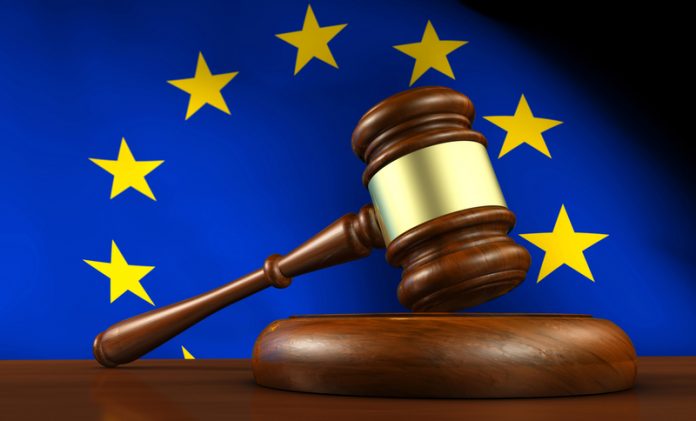The Court of Justice of the European Union was founded in 1952 to work with the Member States in ensuring the consistent application and interpretation of European Union (EU) law. Open Access Government finds out more about the excellent work they do
The Court of Justice is the judicial institution of the European Union (EU), responsible for reviewing the legality of acts of the EU’s institutions, ensuring Member States comply with their treaty obligations and interpreting EU law at the request of national courts and tribunals.
The court is composed of 28 judges and 11 advocates general. Judges are appointed for a term of six years, which is renewable. They are chosen by common accord of the governments of Member States after consultation with a panel responsible for giving its opinion on prospective candidates. Judges’ independence must be beyond doubt and hold qualifications for the highest judicial offices.
The judges of the court elect from among their number a president and vice-president, who serve renewable three-year terms. The president directs the work of the court and presides at hearings of the full court or the Grand Chamber.
Koen Lenaerts, President of the European Court of Justice
Since October 2015, the role has been held by Belgian, Judge Koen Lenaerts. Lenaerts obtained a candidate in law (summa cum laude) in 1974 from the University of Namur, followed by licentiate in law (summa cum laude) at the Catholic University of Leuven in 1977 and a Master of Laws degree at Harvard Law School in 1978. He became a Master in Public Administration at the John F Kennedy School of Government at Harvard in 1979 and in 1982, obtained a PhD in law from the Catholic University of Leuven.
Since 1983, he has been Professor of Law at the Catholic University of Leuven and has also served as Professor at the College of Europe in Bruges, Visiting Professor at Harvard Law School and Judge at the Court of First Instance of the European Communities. He became a judge at the Court of Justice in October 2003 and was elected Vice-President of the Court between 2012 and 2015.
Over the years, the court’s case law has established a number of fundamental principles.
Community law in the Member States
In 1963, the case of Ven Gend & Loos introduced the principle of the direct effect of community law in the Member States, which now enables European citizens to rely directly on EU law before their national courts.
Van Gend & Loos was a transport company that imported goods from Germany to the Netherlands and had to pay customs duties it considered incompatible with the EEC Treaty prohibiting increases in duties on trade between the Member States. Following a referral by a Dutch court, the Court of Justice decided the company had a direct guarantee of its rights under community law before the national court.
A year later, the Costa judgement, involving an Italian court asking the Court of Justice to decide whether a national law on nationalisation of the production and distribution of electrical energy was compatible with the EEC Treaty, established the primacy of community law over domestic law.
Another fundamental concept was established in 1991. In Francovich & Others, two Italian citizens who were owed pay by their insolvent employers brought actions for a declaration that the Italian state had failed to transpose community provisions protecting employees in the event of their employers’ insolvency.
The court stated that the directive in question was designed to give individuals rights that they had been denied by the state’s failure to implement it. This established the principle of the liability of Member States to individuals for damage caused by a breach of community law by that state.
The uniform application of laws across all 28 Member States
The Court of Justice also works with national courts and tribunals called upon to decide a dispute involving EU law. National courts can, and sometimes must, submit questions to the Court of Justice for a preliminary ruling. It then provides its interpretation of or reviews the legality of, a rule of EU law.
The development of its case law demonstrates the court’s work in creating a legal environment to protect the rights of citizens under EU legislation and to ensure the effective and uniform application of those laws across all 28 Member States.
Open Access Government
editorial@openaccessgovernment.org





![Europe’s housing crisis: A fundamental social right under pressure Run-down appartment building in southeast Europe set before a moody evening sky. High dynamic range photo. Please see my related collections... [url=search/lightbox/7431206][img]http://i161.photobucket.com/albums/t218/dave9296/Lightbox_Vetta.jpg[/img][/url]](https://www.openaccessgovernment.org/wp-content/uploads/2025/04/iStock-108309610-218x150.jpg)





